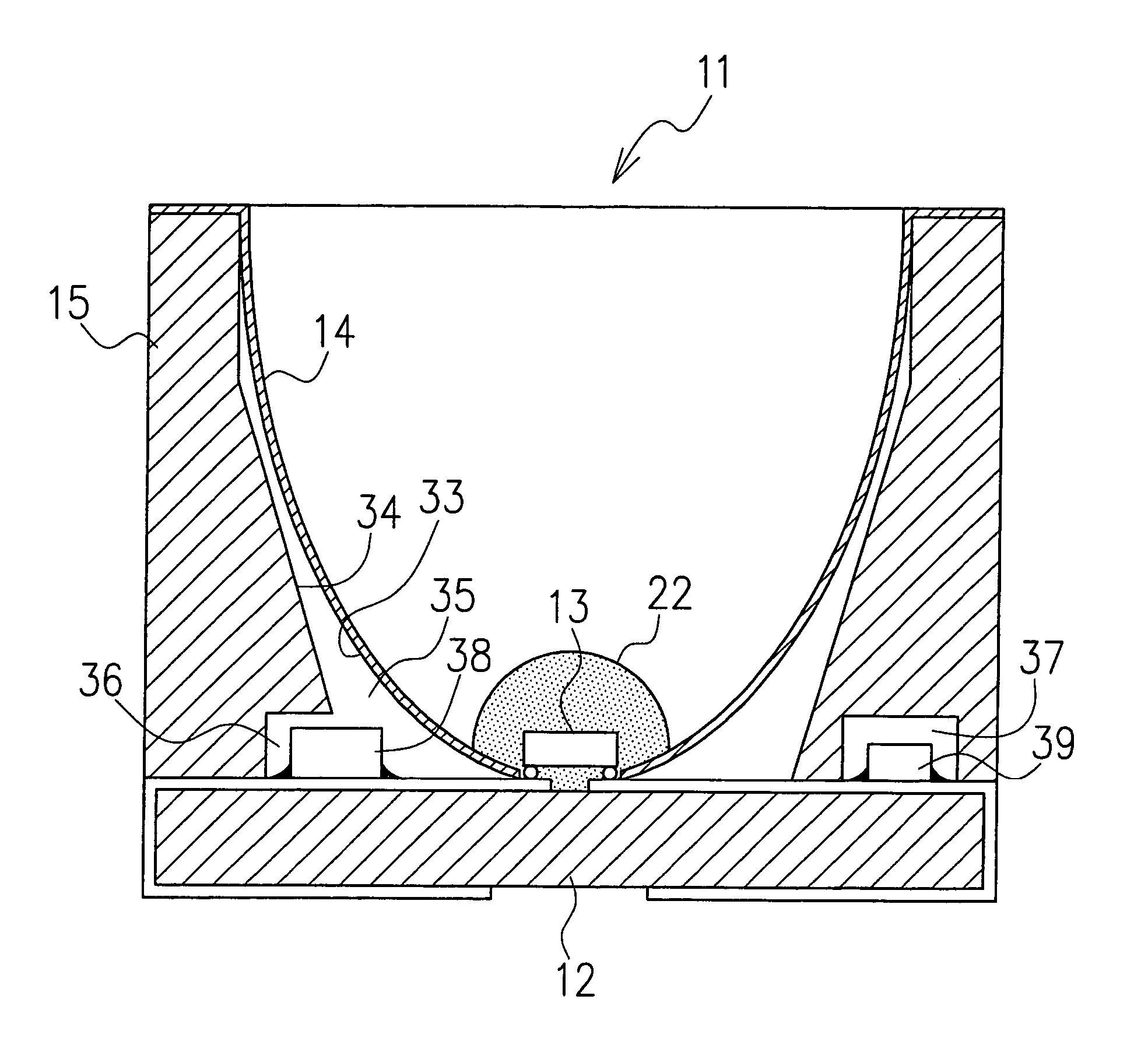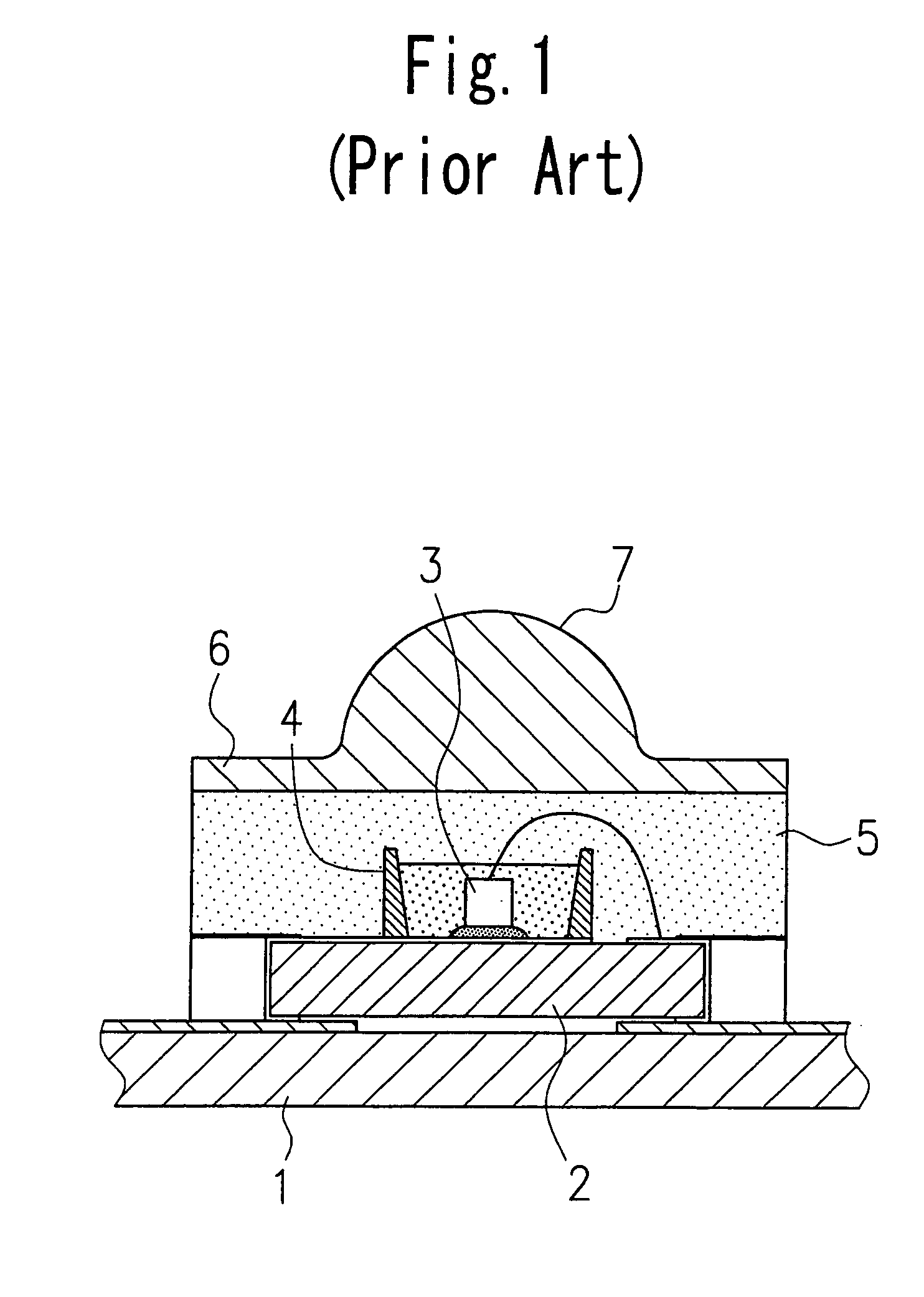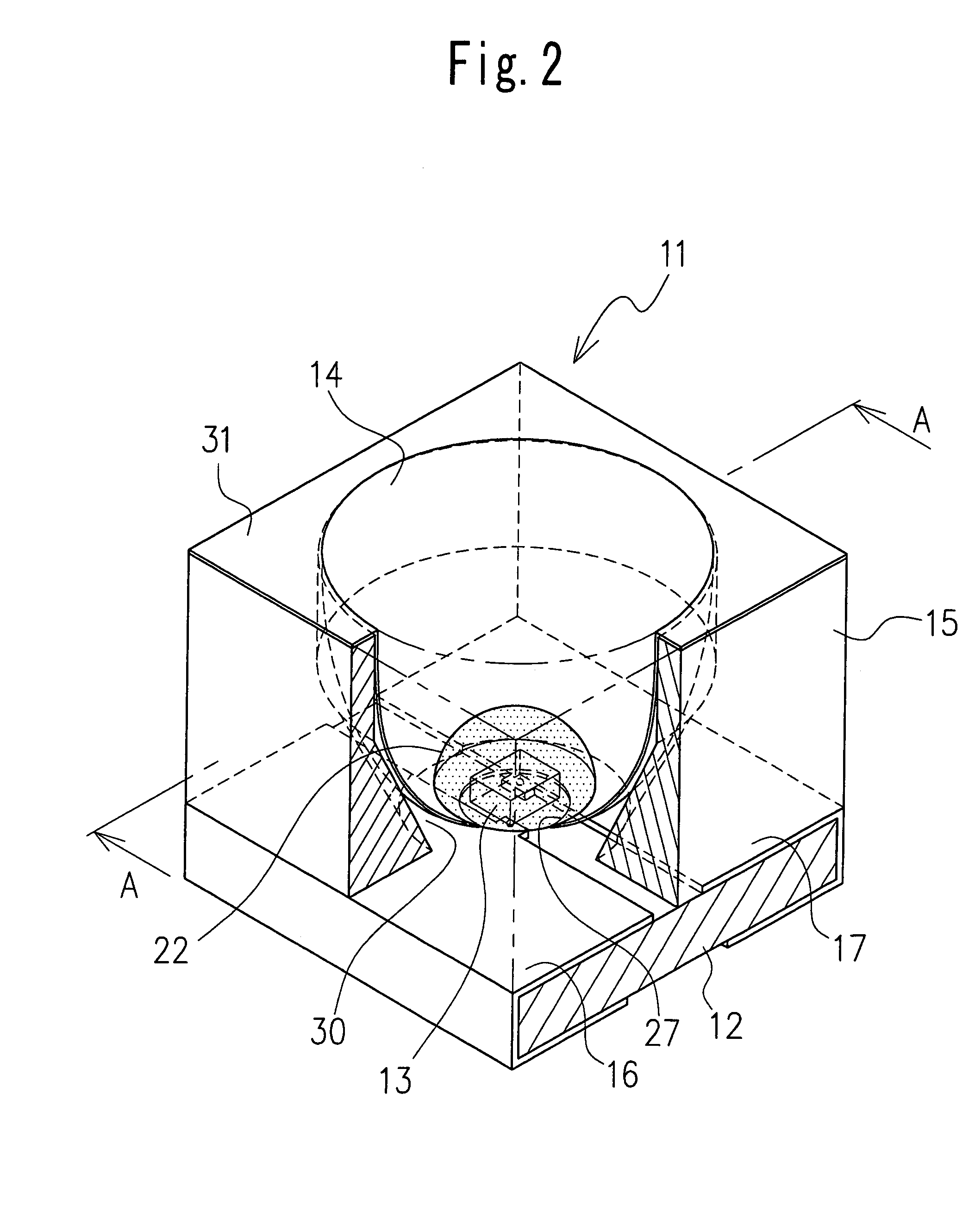Light emitting diode
a light-emitting diode and diode technology, applied in semiconductor devices, semiconductor/solid-state device details, electrical devices, etc., can solve the problems of difficult to achieve the required light directivity control, the roughness height rating of the cup surface is limited, and the surface roughness height rating is less than or equal, etc., to achieve high heat resistance, high reflection effect, and high roughness height rating
- Summary
- Abstract
- Description
- Claims
- Application Information
AI Technical Summary
Benefits of technology
Problems solved by technology
Method used
Image
Examples
Embodiment Construction
[0024]Now, embodiments of the light emitting diode of this invention will be described in detail by referring to the accompanying drawings. FIG. 2 is a perspective view showing an entire construction of the light emitting diode as one embodiment of this invention. FIG. 3 is a cross-sectional view taken along the line A—A of FIG. 2. FIG. 4 is an enlarged view of a part B of FIG. 3.
[0025]As shown in FIG. 2 to FIG. 4, a light emitting diode 11 of this invention has an almost square base substrate 12 having a pair of electrodes formed on a surface of a glass epoxy substrate, a light emitting element 13 arranged at an almost central part of an upper surface of the base substrate 12, a reflection cup 14 arranged to surround the light emitting element 13 to control a directivity of light emitted from the light emitting element 13, and a frame 15 arranged on a back side of the reflection cup 14 to support it.
[0026]The paired electrodes formed on the base substrate 12 are made up of a cathod...
PUM
 Login to View More
Login to View More Abstract
Description
Claims
Application Information
 Login to View More
Login to View More - R&D
- Intellectual Property
- Life Sciences
- Materials
- Tech Scout
- Unparalleled Data Quality
- Higher Quality Content
- 60% Fewer Hallucinations
Browse by: Latest US Patents, China's latest patents, Technical Efficacy Thesaurus, Application Domain, Technology Topic, Popular Technical Reports.
© 2025 PatSnap. All rights reserved.Legal|Privacy policy|Modern Slavery Act Transparency Statement|Sitemap|About US| Contact US: help@patsnap.com



